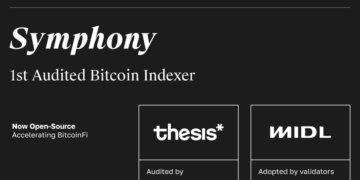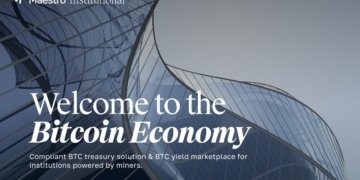Anticipated US Rate Cuts to Enhance DeFi Yields, Reports Suggest
Amidst a dynamic financial landscape, the decentralized finance (DeFi) sector is bracing for some favorable winds with anticipated US rate cuts. Analysts at Bernstein are suggesting that this monetary policy shift could significantly boost DeFi yields. Let’s delve into how expected interest rate reductions in the US might enhance the burgeoning DeFi sphere.
The Current Economic Landscape
The US Federal Reserve has been grappling with economic challenges, including inflation and sluggish growth. With recent indicators pointing to a potential economic slowdown, many experts predict that the Federal Reserve will resort to interest rate cuts. These cuts are aimed at stimulating economic activity by making borrowing cheaper.
Impact of US Rate Cuts on Traditional Finance
Historically, when central banks reduce interest rates, it has a profound effect on traditional financial instruments. Reduced rates typically lead to:
- Lower borrowing costs which stimulate consumer spending and business investments
- Lower savings account yields reducing the return on traditional bank deposits
Given this backdrop, individuals and institutional investors often look for alternative investment avenues to secure higher returns, and this is where DeFi comes into the spotlight.
How DeFi Stands to Gain
Decentralized Finance (DeFi) has been transforming the financial ecosystem by leveraging blockchain technology to offer financial services without intermediaries. Central to DeFi’s appeal are the lucrative yields provided by various decentralized mechanisms. When traditional avenue yields fall due to fed rate cuts, DeFi yields become even more attractive. Bernstein’s report highlights several mechanisms through which this benefit might unfold:
Liquidity Pools
Liquidity pools, critical components within the DeFi ecosystem, benefit significantly as more investors seek out higher returns. These pools rely on deposited assets to facilitate decentralized exchanges and other financial activities, offering returns to liquidity providers. Expected lower yields on traditional savings and investments can lead to increased capital flow into DeFi liquidity pools, enhancing overall yield within the DeFi ecosystem.
Decentralized Lending
DeFi platforms also host decentralized lending and borrowing services. Borrowers typically offer up their crypto as collateral while lenders are compensated with interest. As US rate cuts depress yields on traditional savings accounts and fixed-income securities, many might turn to DeFi protocols for higher lending rates, thus driving up returns for crypto-lenders.
Staking
Staking involves holders of a particular cryptocurrency “staking” their assets to support network operations like transaction validation, in return for attractive yields. As the disparity between conventional financial products and DeFi staking yields widens owing to rate cuts, investor appetite for staking is expected to rise, further inflating DeFi yields.
Risks and Rewards
While the potential rewards are enticing, it’s crucial to acknowledge the inherent risks involved in DeFi investments. High yields often come with higher risks. Key risks to watch out for include:
- Smart contract vulnerabilities which could potentially be exploited by hackers resulting in substantial financial losses
- Market volatility especially within the crypto domain, where asset values can swing dramatically
- Regulatory uncertainties with governments increasingly scrutinizing crypto activities, leading to possible stringent regulations
Investors are advised to conduct thorough research and possibly seek expert advice before diving deep into DeFi investments.
Future Outlook
The intriguing nexus between traditional monetary policy and decentralized finance is something the financial world is closely monitoring. Bernstein’s bullish outlook on DeFi yields post-US rate cuts underscores a growing recognition of DeFi’s potential in global finance. As traditional margins compress, the innovative and high-yielding terrain of DeFi stands to gain attention and capital influx.
While rate cuts are anticipated to provide immediate boosts, the future trajectory of DeFi will also depend on its ability to innovate, address security concerns, and navigate the evolving regulatory landscape.
Conclusion
The predicted rate cuts by the US Federal Reserve could catalyze a significant shift in financial flows, potentially driving increased interest and investment in DeFi. As traditional financial yields diminish, DeFi offers a compelling alternative with its promising yield mechanisms such as liquidity pools, decentralized lending, and staking.
Investors, however, must tread cautiously and balance the tantalizing rewards against the inherent risks. As DeFi continues to mature and secure its place in the financial paradigm, it might just be the perfect time for investors to explore its high-yielding potential.


















